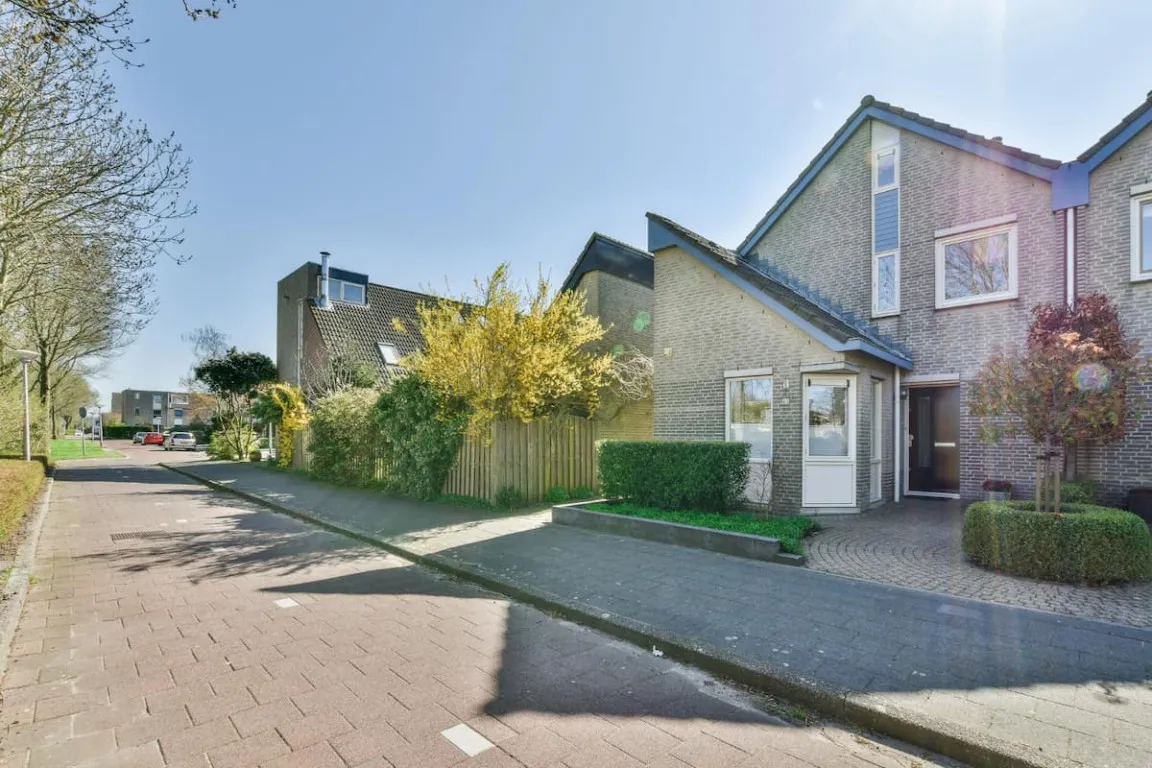Interior aesthetics is not the only factor that determines the comfort of living in a house. There is one thing whose role is equally important, which is the smooth air circulation. This is influenced by the arrangement of outdoor spaces, including the implementation of building boundary lines regulations. These regulations must also be observed to prevent conflicts between neighbors.
Are you curious about what building boundary lines are? This article will explain the definition, function, regulations, and how to calculate the building boundary lines. To ensure you understand and can apply them correctly, make sure to read through until the end!
What Are the Building Boundary Lines?
The Building Boundary Lines (GSB) is the minimum distance that must be maintained between a building and the property line, especially if the land borders public facilities, such as rivers, highways, or railway tracks. The building line is measured from the outermost boundary of the road ownership space to the outermost front of the building.
In simple terms, you are not allowed to build a permanent structure in areas that are within the building line. In general, the building line plays an important role in supporting the creation of a safe, comfortable, tidy, and aesthetic environment.
This regulation is important to be understood by the stakeholders involved in construction projects, such as landowners, architects, contractors, developers, and officers from the spatial planning department.
It should also be understood that the building line is not only related to the distance between buildings and property boundaries but also includes the following components:
- Building height: Building height limits to ensure proper views and air circulation.
- Land area: The minimum land area required to establish a building.
- Building Floor Coefficient (KLB): The ratio of the area of the building's floor to the area of the land.
- Setback requirements: The minimum distance between the building and the front, side, and back property lines.
Building Boundary Lines Functions
It has been previously mentioned that the boundary lines play a role in creating a safe and comfortable environment. To achieve this condition, the building boundary lines can perform the following functions:
1. Creating a Safe Boundary Around the Building
Building boundary line provides an ideal boundary between the building and the lot line or public facilities. This boundary can become a natural ventilation, maintain user privacy, and prevent conflicts between landowners.
2. Protecting Buildings from River Tides
A building located on the edge of a beach or river certainly requires extra protection, especially during times of increased water flow. With the existence of building boundary lines regulating the distance of the building from the water's edge, the risk of damage due to tidal waves, abrasion, or flash floods can be avoided.
3. Preventing Hazards from Short Circuits
Building boundary lines allow buildings not to be adjacent to one another. This condition can reduce the risk of fire spreading when a fire occurs, whether caused by electrical short circuits, gas explosions, or open flame activities, such as illegal waste burning and the use of traditional stoves.
4. Minimizing Accident Risks
This function is more directed towards buildings located near highways. By implementing Building Boundary Lines regulations, buildings will have sufficient distance from the road so as not to obstruct the driver’s view or hinder pedestrians. This will be very helpful in preventing accidents.
5. Providing Emergency Access
During a fire, evacuation routes are greatly needed as access for users to escape quickly and safely. Additionally, the proper implementation of building boundary lines will also facilitate fire trucks in reaching fire points effectively.
Read also: Bathroom Ventilation Design Ideas for Better Airflow
Regulations Regarding the Boundary Line
The legal basis containing the regulations for building boundary lines is Constitution No. 28 of 2002 regarding buildings and the Minister of Public Works Decree No. 441 of 1998 regarding technical requirements for buildings.
In Constitution No. 28 of 2002, it is explained that the building boundary lines are a line that marks the minimum free distance from the outermost side of a building mass to the boundary of the land being occupied.
Both legal bases mentioned above state several requirements that must be met to implement building boundary lines regulations, including:
- The outermost area of the house wall must not exceed the designated yard limits.
- The foundation or outer building structure must be at least 10 cm away from the building boundary.
- If your building wall was previously attached to a neighboring building and you wish to renovate the building at some point, you need to create a boundary wall next to the main wall first.
- In residences that are closely spaced or not separated by free space on the side, ensure that the free space at the back is at least half of the boundary line at the front of the building.
- Structural components must be placed according to building height standards to ensure a more organized layout.
With the existence of strict regulations, anyone who violates the building boundary lines rules must face sanctions. Some forms of sanctions that are commonly imposed include the suspension of construction processes until improvements are made, the imposition of administrative fines, and even the demolition of buildings in cases of very serious violations.
How to Calculate the Correct Building Boundary Lines
In measuring or calculating the building boundary lines, you can use the road in front of the project area as a reference.
Note that the building boundary lines are half the width of the road. For example, if the width of the road is 16 meters, then the building line is 8 meters. Therefore, you may only construct a building with the outermost distance of 8 meters from the edge of the road. To make it easier for you to understand, here are the building boundary lines standards for several types of buildings:
- In residential areas, it is about 3–5 meters.
- In a corner house (a house located at the corner or end of a residential block), it is determined from the front and side of the building.
- For structures located near a river, it is 10 meters from the riverbank.
An important tip you should follow is to add an extra 1 meter from the reference so that the Building Approval (PBG) is easier to obtain.
This is an explanation regarding building boundary lines and how to accurately calculate them. Understanding this concept is an essential asset to establishing buildings that are socially and legally harmonious, as it helps avoid various burdensome sanctions.
However, to support the establishment of harmonious buildings, including residential homes, it is necessary to use quality materials, particularly cement, as a widely used component in construction projects. There is no need to hesitate, just trust Semen Merah Putih.
One of the products from Semen Merah Putih, namely Semen Merah Putih Watershield, is a multi-purpose super premium cement product equipped with water repellent technology. This superior cement product offers triple protection, providing defense against water seepage from outside, inside, and from ground or capillary water.
Semen Merah Putih Watershield offers various advantages over regular cement. All structural and non-structural needs, such as skim coating, plastering, brick laying, column casting, and slab casting, can be handled with Semen Merah Putih Watershield.
Want to get complete information about the Semen Merah Putih products that suit your needs? Don’t hesitate to contact us immediately to get the best construction solutions for your project.
Read also: Understanding Building Permit & Its Transformation Building Approval



